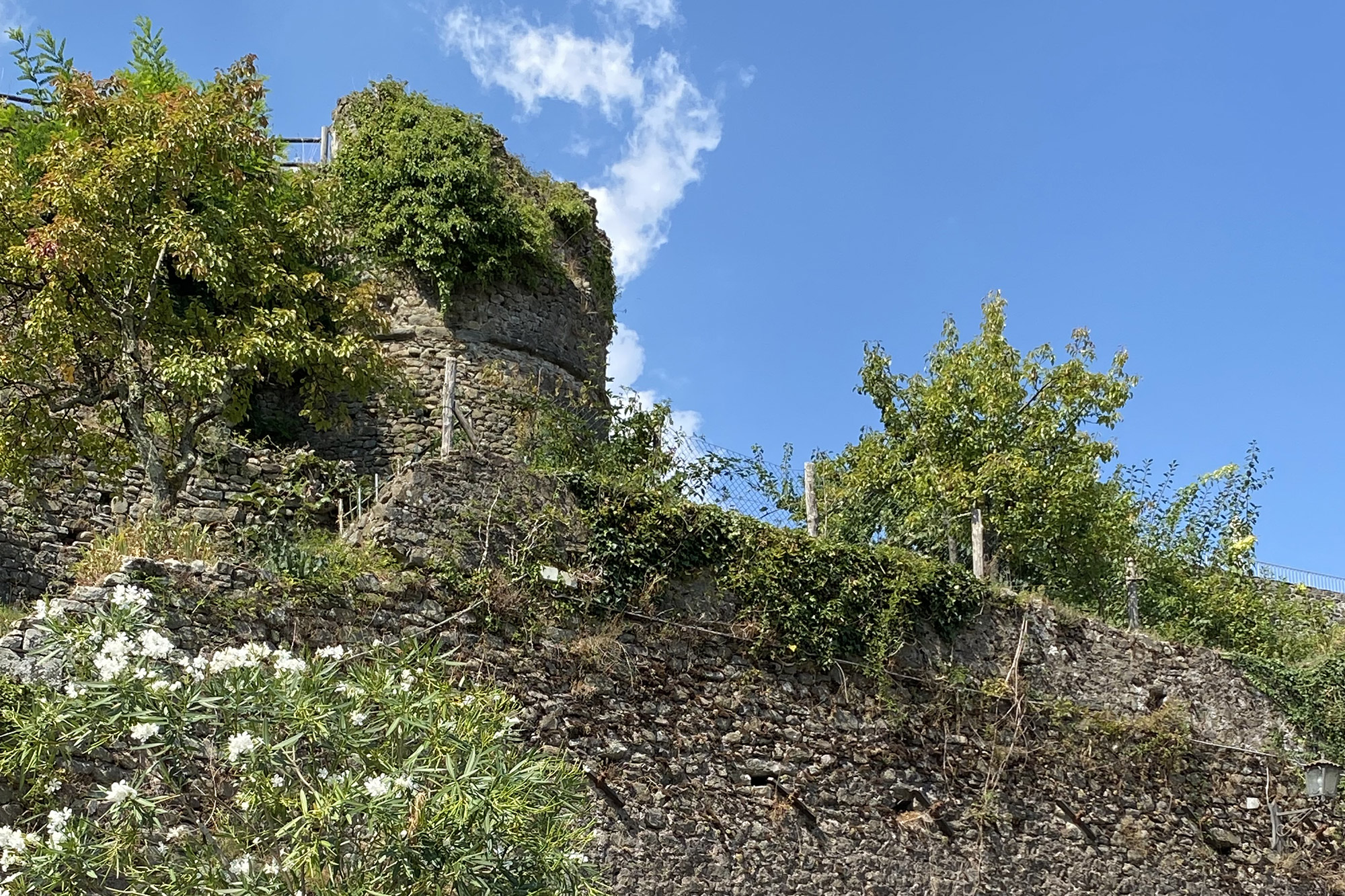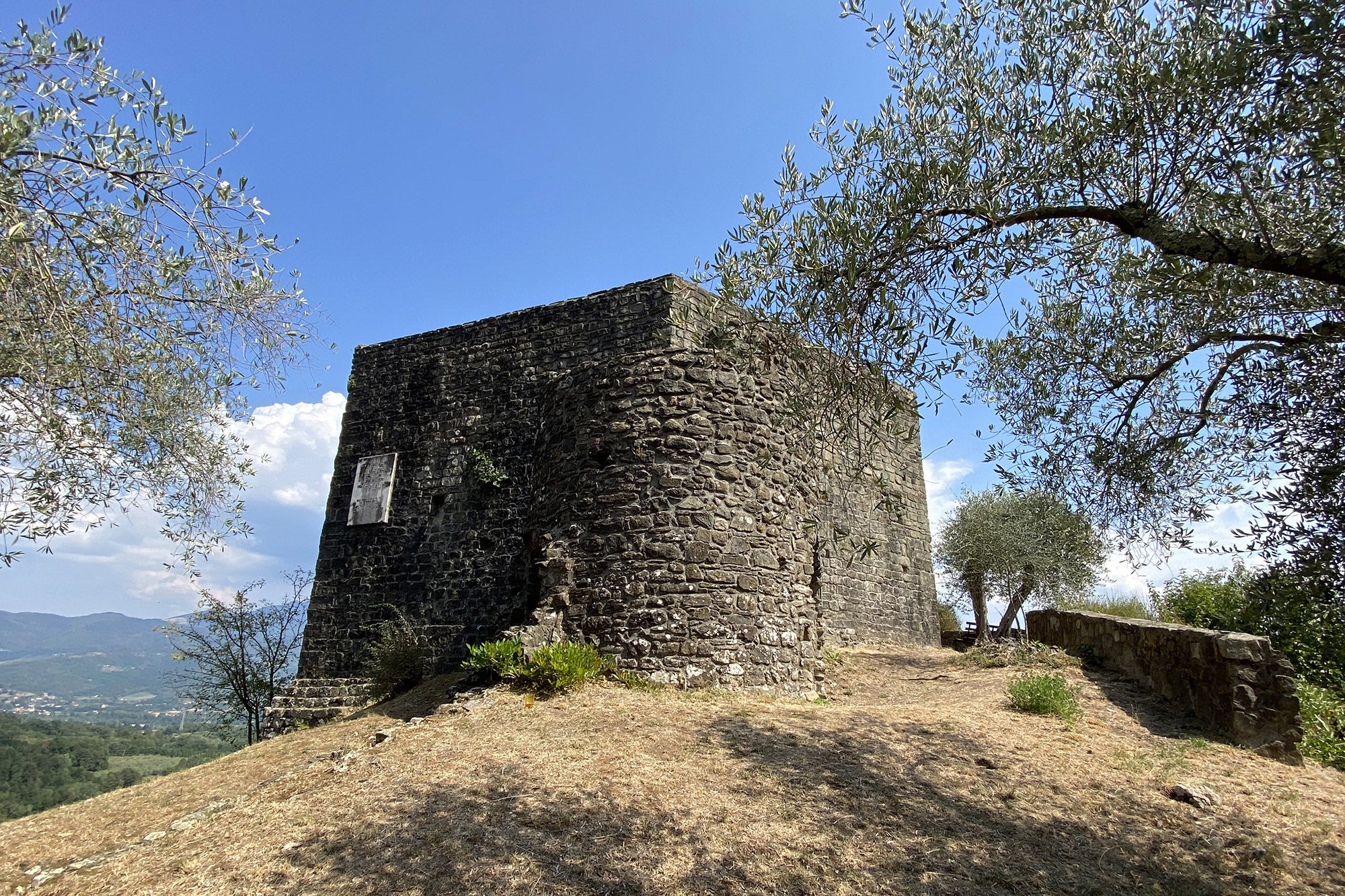













How to reach
From the Cisa A15 motorway, exit at Pontremoli, follow the direction to Mulazzo along the road SP 32. The town of Mulazzo is in Lunigiana, on the right side of the river Magra.
History
Mulazzo was an imperial fief belonging to the Malaspina family since 1164 but today of its powerful fortifications remain few traces. Among these, what remains of the 'Tower of Dante' which was the central nucleus of the primitive fortified structure, dated 10th century. Some sources attribute its origin to the Byzantine age. At the time of its maximum development was six floors high, more than 30 meters, with access from the second floor by a wooden staircase. Today it is reduced to 1/6 of its height, most of it was demolished, because at risk of collapse, around 1750. The circular tower that is leaning against it dates back to the fifteenth century.
The Tower is the only one in the whole Lunigiana to have a hexagonal shape, originally it was surrounded by a wall inside which a castle was built and then enlarged by Corrado Malaspina l'Antico. Dante was hosted here by the Malaspina family from April 1306 to spring of the following year. At the beginning of the 16th century there were already few traces of this structure, and it was definitely abandoned. Only the Tower remained to the Commune, fulcrum of the town festivals and then also prison and gunpowder magazine.
On the opposite side, the one facing the territories of Genoa, in the sixteenth century was built a new castle to defend the village, as well as to dominate the road that went up to the Casoni and the Val di Vara. It became the exclusive residence of the Malaspina branch of the family called "del castello". At its side the marquises, for their convenience, built a water aqueduct of which few traces remain (called 'the Arches' and today symbol of Mulazzo). On this side opened the 'Porta Soprana' (or Genovese) of the city walls, still intact today. The other town gate, the 'Sottana', stood just above the Oratory of San Rocco.
The terrain of this area was particularly landslide and the castle decayed rapidly, also because due to its strategic importance, guarding a bottleneck of the valley, it was destroyed several times. For this reason The Malaspina build their new residence near the Tower: in the middle of 1500 in this area was built by the Marquis Giovan Cristoforo a vast Palace that in practice prevented the use of the Tower to the people. The accesses were in fact located within the Marquis' possessions, such as the courtyard (where is today the staircase) and one directly from the main floor of the Malaspina Palace, along the still visible walkway that climbs the hill towards the Tower.
In the XVIIth century, in order to contrast the Spanish invasion of Lunigiana, the Grand Duke Ferdinando I de' Medici, who together with the people of Mulazzo governed the territory, placed here a Grand Ducal Governor and the Tower was fortified with the addition of fire ports. Many times there were also heated disputes between the Municipality of Mulazzo and the Malaspina for the use of the Tower, concluded in favor of the people who came to pay an annual fee to have the use of the same. The last feudatory was Azzo Giacinto III, during the Napoleonic era.
More info & notes
Archivio Museo dei Malaspina a Mulazzo, open to visitors:
Saturday, Sunday and public holidays from 15:00 to 19:00